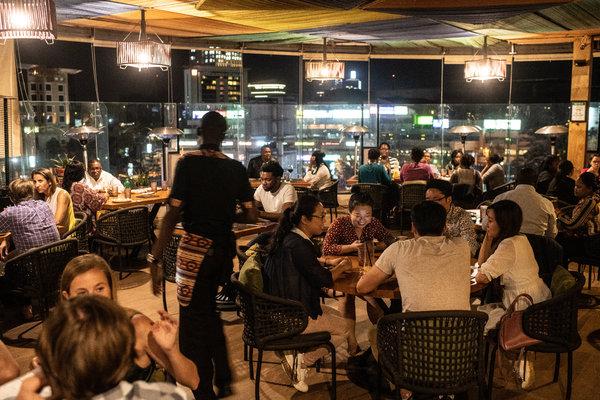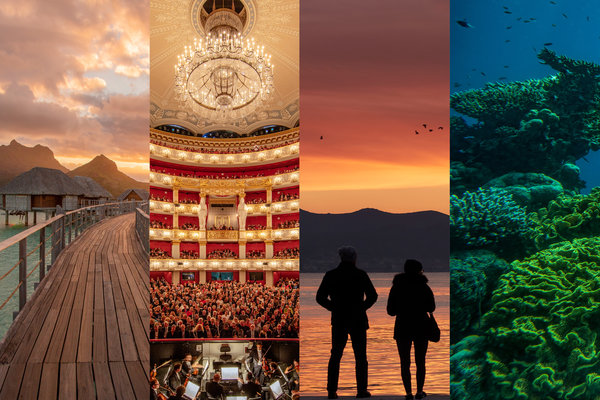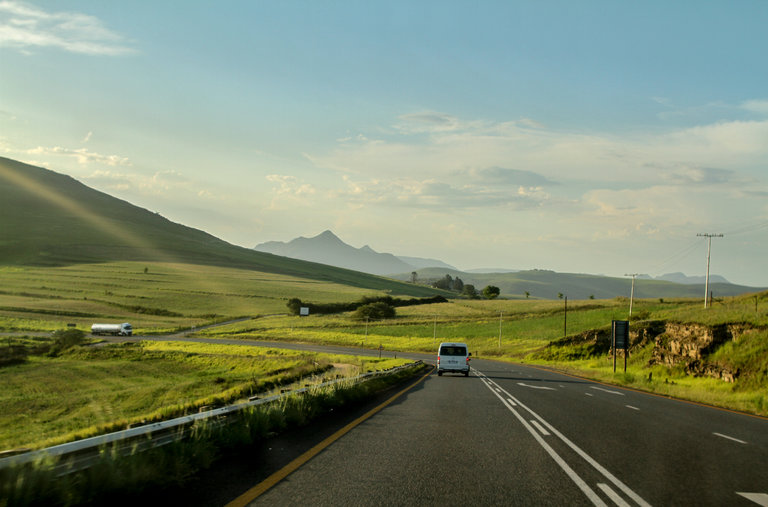On New Year’s Eve, as people around the world celebrated with a kiss or a glass of champagne, some partygoers in Nairobi celebrated a different way: with 12 grapes, one for each month of the year, as the clock ticked down to midnight. This Mexican tradition, which dates back to the Spanish colonial period and is said to bring good luck, arrived in Nairobi on the crest of a cultural wave that is taking over Kenya’s trendiest corners. Mexican culture is everywhere: on restaurant menus, in dance clubs, on television.
Although the number of actual Mexicans in Nairobi is small — about 200 people, according to embassy estimates — and they don’t have a defined neighborhood, their influence on the city’s cultural life is hard to miss (and that’s not even including Lupita Nyong’o, the daughter of Kenyans who was born in Mexico City). Nairobians can drink tequila and dance to Mexican-Kenyan fusion music at Blend Lounge on a Saturday night, then worship with Mexican Catholic priests at Our Lady of Guadalupe Parish the next morning. Decent Mexican food is notoriously hard to find throughout Africa, but in Nairobi, hungry travelers don’t even have to leave the airport: at Java House, East Africa’s answer to Starbucks, they can feast on quesadillas, guacamole, and even huevos rancheros.
The first Mexicans came to Kenya in the late 40s, as Catholic missionaries. Here’s how their influence spread.

An outdoor patio at Mercado, where both the head chef and bartender are from Mexico. CreditAndrew Renneisen for The New York Times
From TV
The fusion of Mexican and Kenyan cultures began in the 1980s, as Latin American telenovelas, mostly from Mexico, took over Kenyan airwaves. The rights for these soap operas were cheaper to buy than those for United States shows, so networks snatched them up. Today, business is still booming: Caroline Mbindyo-Koroso, a CEO and executive producer of African Voices Dubbing Company, says the company started out in early 2015 with two employees dubbing soap operas. Now it’s the biggest dubbing company in East Africa, with 15 recording booths and four dedicated mixing stations.
Ms. Mbindyo-Koroso says soap operas are so popular because they’re aspirational: a pretty, downtrodden hero or heroine overcomes daunting odds — an evil stepmother, a bespectacled business tycoon — to achieve greatness. Most Mexican telenovelas in Kenya currently air in English, but Ms. Mbindyo-Koroso thinks there would be even more potential if they were dubbed into local languages. There are more than 120 million Swahili speakers in Africa, she notes.
To the radio
Born in Veracruz, Mexico, Edgar Manuel Vargas Gallegos, 28, had always idolized the Mexicans who had worked in Kenya as missionaries. After seminary school, but before his ordination, Mr. Gallegos followed their footsteps, intending to spread the Gospel.
Instead Mr. Gallegos fell in love with genge, Nairobi’s home-grown genre that combines traditional hip-hop beats with rap lyrics in Kiswahili and Sheng. With telenovelas popular, he reasoned: why couldn’t Mexican-Kenyan fusion be the next big thing in music, too? Mr. Gallegos ditched the priesthood and adopted the stage name “Romantico” to pursue a life in rap.

52 Places to Go in 2019
A starter kit for escaping into the world.
His collaborations with Kenyan artists, including Samaki Mkuu (the Kenyan Olympic swimmer Jason Dunford), and the so-called father of genge, Jua Cali, are addictive mash-ups: in the video for his 2018 single, Mkora (which means “scoundrel”), Romantico raps in Spanish and Swahili while wearing a bright-blue Mexican wrestler mask. In a forthcoming song, he reimagines the Veracruz classic “La Bamba” with genge soul.
“We are starting a new movement here in East Africa: a fusion of Spanish and Swahili music,” said Romantico, sitting outside a Nairobi taqueria where Kenyan employees clamored to take selfies with him. “The people can feel that it belongs to us. When we are singing, we are not singing for ourselves. We are singing for the people.” And the people love it: already, Romantico has performed on two of Kenya’s most popular TV shows, Ten Over Ten and The Churchill Show.
The hype has spilled over into classical music genres, too. The Kenyan classical guitarist Kevin Munyi, who specializes in private performances and corporate events, said there is suddenly more demand for mariachi music than ever before.
To the restaurant kitchen
“Mexican food has a checkered history in Kenya,” said Salisha Chandra, one of the co-owners of Fonda NBO, which became Nairobi’s first authentic Mexican restaurant when it opened in October 2017. (NBO is the airport code for the city’s international airport and has become shorthand for the city.) “It was only Tex-Mex, and those restaurants opened and closed very quickly.”

Karura
Forest
The Alchemist
Blend Lounge
Nairobi Railway Station
Our Lady of Guadalupe
Roman Catholic Church
southern bypass rd.
Street data from OpenStreetMap
Ms. Chandra and her husband, Yash Krishna, lived in the United States for several years, including in California, before finally returning home to Nairobi. They missed the food they had fallen in love with abroad.
“We couldn’t figure out why there wasn’t any really good, authentic Mexican food here,” said Ms. Chandra. “It’s really similar to Kenyan food, in terms of ingredients: corn, avocados, beans. We said, ‘it should work really well with the Kenyan palate.’”More on Africa


Indeed, ugali (the stiff cornmeal porridge that is ubiquitous in East African cuisine) is reminiscent of Mexican corn masa, and kachumbari, a Kenyan fresh tomato and onion salad, is a dead ringer for pico de gallo.
Ms. Chandra and the other co-owners traveled to Mexico, where they ate their way around the country, then flew the acclaimed Mexican chef Juan Cabrera Barrón to Nairobi for 10 days to help develop the menu. Authenticity was key: when certain ingredients, such as guajillo chilies and epazote herbs, weren’t available in Kenya, Fonda NBO partnered with an organic farm to grow them. And after more than a dozen misfires, they finally found a local Kenyan cheesemaker to make perfect queso fresco and queso Oaxaca from scratch.
Spira Cornel, the head chef at Fonda NBO, honed his skills with many different global cuisines but had never even tasted Mexican food before. “From day one, it was a blast for us as chefs. Mexican and Kenyan recipes use the same ingredients, but it’s a very different platform and techniques.”
Since Fonda NBO opened, Nairobi’s Mexican food scene has boomed: At Mercado, in Westlands, the head chef and bartender are both from Mexico, and at Alchemist, a cultural marketplace of pop-up bars, music venues, and food trucks, hipsters can wash down nachos with Mexican-inspired tequila cocktails.
Jay Muchai, a Kenyan chef and manager at Fonda NBO, has never traveled to Mexico but still feels a strong connection to the country. “Every time I serve the locals, I pretend to be more Mexican than Kenyan,” he said. “They say Mexican food feels like home food. It has the same soul.”
52 PLACES AND MUCH, MUCH MORE Follow our 52 Places traveler, Sebastian Modak, on Instagram as he travels the world, and discover more Travel coverage by following us on Twitter and Facebook. And sign up for our Travel Dispatch newsletter: Each week you’ll receive tips on traveling smarter, stories on hot destinations and access to photos from all over the world.




